50 Totally Crazy Statistics You Won’t Believe Are Real

Unless you’re a math whiz, looking at numbers tends to be confusing—or downright boring. But sometimes, they can surprise you. For instance, do you know how many 2-liter bottles the average person could fill with the amount of saliva they produce in a month? (Spoiler alert: a lot.) Or can you guess how many Americans can confidently reel off the five freedoms protected by the First Amendment? (Hint: not very many.)
We’ve combed through studies, reports, and tons of data to find some astonishing, 100 percent real statistics that’ll renew your interest in numbers. So read on for some fascinating facts and figures that are guaranteed to make your head spin!
1
The average drunk driver drives under the influence more than 80 times before being arrested the first time.
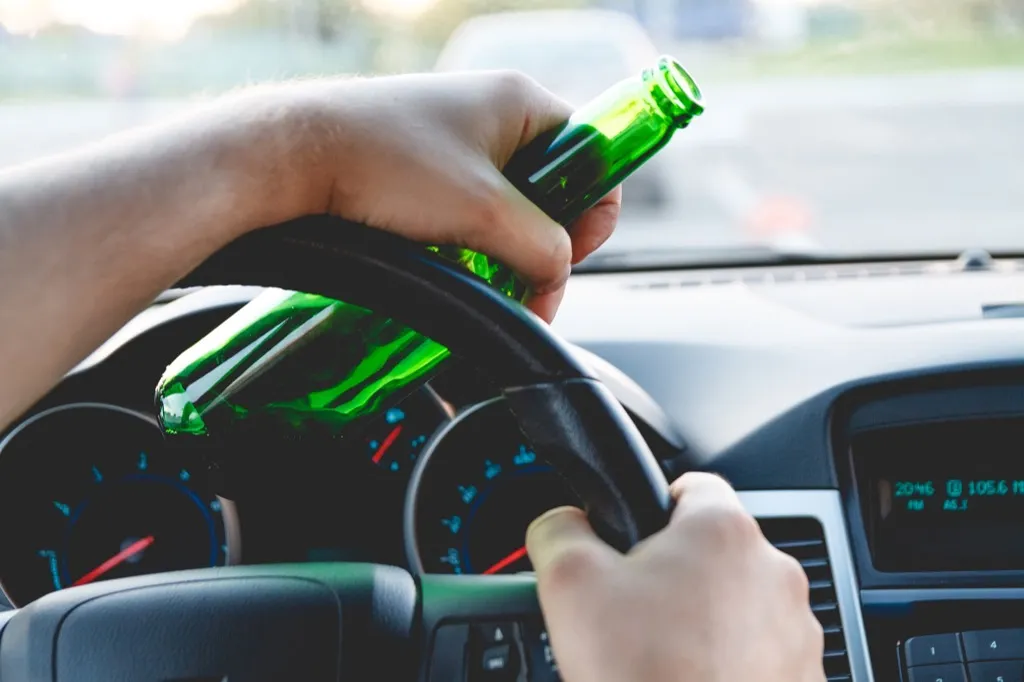
It seems not enough people have gotten the message that cars and alcohol should never be mixed. On average, people will drive drunk more than 80 times before their first arrest. That’s according to Mothers Against Drunk Driving (MADD), which cited arrest data from the FBI and incidence data from the Centers for Disease Control and Prevention (CDC).
2
Fewer than 2 percent of NCAA student-athletes go on to the professional level.

We all recognize that it takes a superior amount of talent, determination, and sometimes sheer luck to make it into the pantheon of professional athletics. But the NCAA revealed just how stiff the competition is: Fewer than 2 percent of NCAA collegiate athletes go pro. The NCAA also estimates that the likelihood of even progressing from high school sports to the NCAA level is about 6 percent. In other words, the chances of the average American tee-baller climbing up the ranks to the MLB are very, very slim.
3
One-third of adults still sleep with a comfort object.

No need to stuff that teddy bear from your infant years in your closet the next time you have an adult sleepover—the odds are good that he or she has a comfort object, too. A study conducted by Sleepopolis and OnePoll reported that 34 percent of adults still sleep with a stuffed animal, blanket, or other sentimental object, according to a survey of 2,000 adults.
4
The average American generates nearly 4.5 pounds of trash each day.
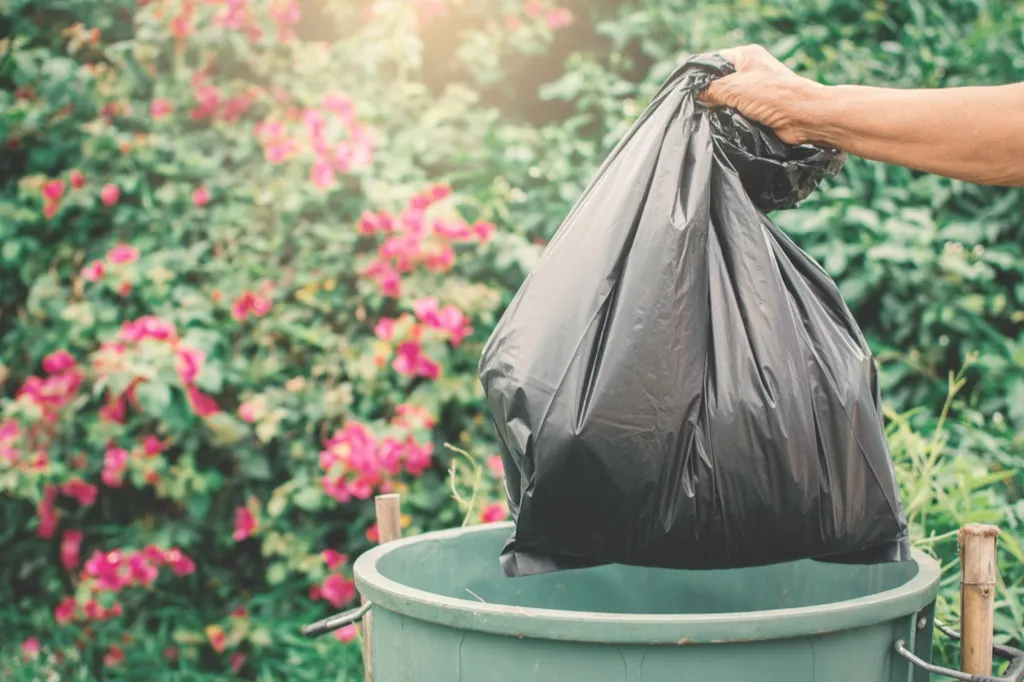
It’s usually a pretty mindless task to take out the trash—but maybe we should start thinking about it a little bit more. According to stats from the U.S. Environmental Protection Agency (EPA), in 2015 (the last year with data available), each American generates about 4.48 pounds of trash every single day, totaling 1,642.5 pounds per year.
5
Over the past century, “Michael” has been the most popular male baby name 44 times.

The Social Security Administration reports the top baby names by state, year, and decade. And if you have your heart set on giving your son a unique moniker, you should probably avoid “Michael,” the top male baby name 44 times in the last 100 years. The same goes for the name “Mary,” which has been the most popular female name 37 times over the last century.
6
The global rate for washing hands after using the toilet is under 20 percent.

The CDC reports that around the globe, only 19 percent of people wash their hands after using the toilet. Also consider that the CDC reports that an estimated 2.5 billion people (roughly 35 percent of the entire world’s population) do not have access to “improved sanitation,” or a means of properly safeguarding people from contact with their excretions.
7
Americans read for personal interest for 10 minutes or less per day.

The most recent American Time Use Survey, conducted by the Bureau of Labor Statistics, found that many Americans barely read anything they don’t absolutely have to. On a whole, individuals ages 15 to 54 read for 10 minutes or less per day. People ages 20 to 34 had the lowest rates, averaging only 0.11 hours (or about 7 minutes) of leisurely reading per day. On the opposite end of the spectrum, people ages 75 and over turned pages for an average of 51 minutes per day. And speaking of reading…
8
More than 36 million U.S. adults cannot read above a third grade level.

According to ProLiteracy, an organization that publishes Adult Literacy Education: The International Journal of Literacy, Language, and Numeracy in conjunction with Rutgers University, more than 36 million American adults cannot read, write, or do basic math above a third-grade level.
9
The average American eats nearly 13 pounds of ice cream per year.

As of 2017, the average American will eat an estimated 12.7 pounds of ice cream each year. As excessive as that might sound, the stats are actually down from 10 years prior, when Americans consumed 14.8 pounds of ice cream per person in 2007, according to dairy data from the U.S. Department of Agriculture Economic Research Service.
10
One in seven Americans receive food from a food bank.

You should never think twice about donating to your local canned food drive, seeing as one in seven Americans (or 46.5 million people) received food from a food bank in 2014. Those numbers include an estimated 12 million children and 7 million seniors, per a report by Feeding America, a nonprofit network of food banks from all around the country.
11
And more than half a million people in America experience homelessness a night.
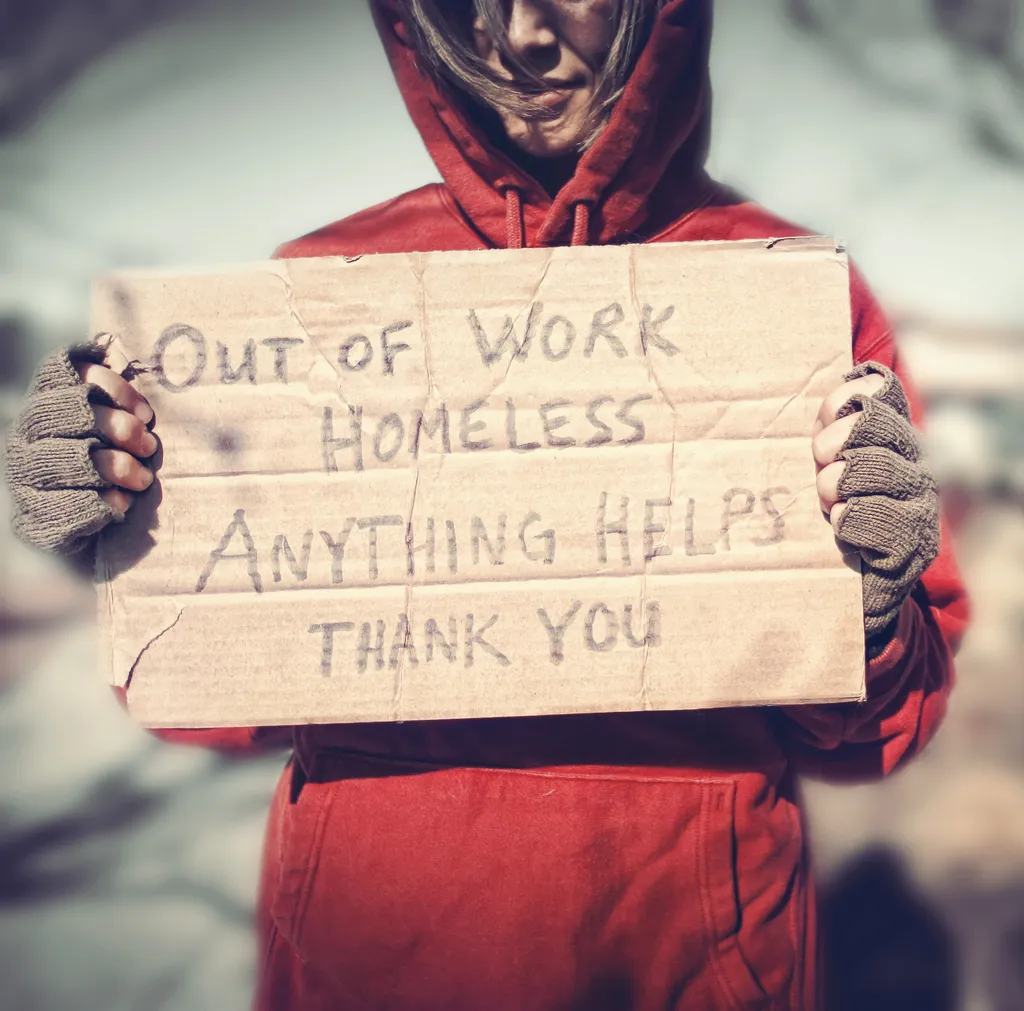
The U.S. Department of Housing and Urban Development’s most recent Annual Homeless Assessment Report details that an estimated 553,000 people were experiencing homelessness in the United States on a single night in 2018. What’s more, about one-third of those people were in unsheltered locations.
12
We collectively receive about 2.4 billion “robocalls” per month.

You’re not the only one fielding what feels like a million calls from random numbers day in and day out. The Federal Communications Commission (FCC) estimated that about 60 percent of all the complaints it receives pertain to “unwanted calls.” According to the FCC, Americans, in total, receive about 2.4 billion robocalls per month, which the organization attributed to private analyses from 2016.
13
Fewer than a quarter of American adults meet U.S. guidelines for physical activity.

According to a June 2019 report from the CDC, in 2017, only 24.3 percent of American adults met the Physical Activity Guidelines set by the Department of Health and Human Services. The guidelines stipulate that adults require at least 150 minutes of moderate-intensity aerobic activity a week, coupled with at least 2 days of muscle-strengthening activities each week.
14
Approximately 90 percent of people who suffer an out-of-hospital cardiac arrest die.

Statistics from the American Heart Association report that about 90 percent of cardiac arrests that occur outside of the hospital result in death—and there are more than 350,000 out-of-hospital cardiac arrests every year. On the plus side, nearly 45 percent of out-of-hospital cardiac arrest victims survived when a bystander performed CPR.
15
We get an average of 0.5 pieces of personal mail per household every week.

Turns out, the art of letter-writing really may soon be dead. As of fiscal year 2017 (the most recent fiscal year with data available), personal correspondence—which the U.S. Postal Service describes as “household to household mail,” including personal letters, greeting cards, invitations, and announcements—made up only 0.5 pieces of mail, per household, posted by the USPS every week.
16
Farmers and ranchers make up less than 2 percent of America’s population.

Trying to find a farmer in America might be about as difficult as finding a needle in a haystack. Just under 2 percent of Americans are among the likes of Old Macdonald, according to estimates by the American Farm Bureau Federation.
17
Nearly half of American adults will experience a mental illness during their lifetime.

As of February 2019, the National Council for Behavioral Health estimated that 46.4 percent of adults in the United States will experience a mental illness in their lifetime. Sadly, the organization also estimated that, in the past year, only 41 percent of those actually received some form of professional health care.
18
Nearly a quarter of rural Americans say access to high-speed internet is a “major problem” in their community.
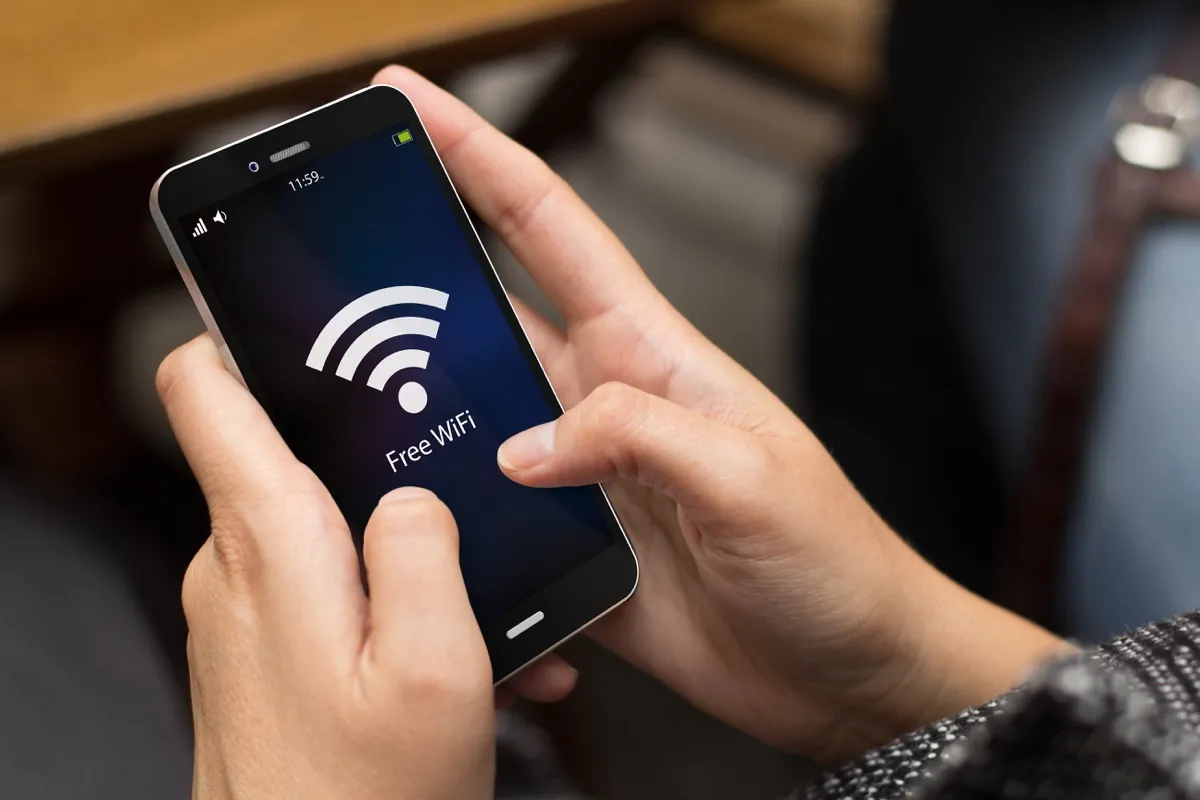
Living in the age of LTE, coffee shop Wi-Fi, and seemingly ubiquitous internet access, it’s easy to forget that connecting to the internet isn’t as effortless for everyone as we might think. According to 2018 data from the Pew Research Center, 58 percent of rural Americans view their access to high-speed internet (or lack thereof) as a problem—albeit a “minor” one. But 24 percent view access to high-speed internet as a “major problem” for their community.
19
On an average day, only 19 percent of American men do housework—as compared to 49 percent of American women.

We might be moving closer and closer to arriving at a place where housework is split fairly between women and men—but the latest American Time Use Survey by the Bureau of Labor Statistics confirms that we’re not there yet. According to their findings, only 19 percent of American men do housework each day on average, compared to 49 percent of American women.
And on the days Americans did perform housework, women spent an average of 2.6 hours on these activities, while men spent 2.1 hours.
20
The average person could fill as many as 23 2-liter bottles with the amount of saliva they produce in a month.

According to a 2009 study published in the Journal of Medicine and Life, the normal human’s daily production of saliva ranges from 0.5 to 1.5 liters. That works out to your salivary glands producing as much as 46.5 liters of slobber a month!
21
The United States has collected more than 1,100 gold medals in the history of the Olympic Games.

Since the first Olympic Games in 1896, the U.S. team has brought home the gold exactly 1,131 times, according to tallies on the official Olympic Games site. Team U.S.A. earned the greatest number of gold medals in a single Games on our own home turf, winning a jaw-dropping 83 gold medals at the 1984 Summer Games in Los Angeles.
22
There are more than 6,000 dogs registered to come to work with Amazon employees at the company’s Seattle office.

Canines are king at Amazon. The company said in a January 2019 blog post that about 500 dogs roam the premises of its North American headquarters on any given day, and about 6,000 dogs in total are registered to come to work with their owners.
If these prime pooches get too burnt out on all their “work,” they can prance over to a dog-friendly water fountain or frequent the building’s doggie deck, which features a fake fire hydrant.
23
America’s drivers cover a combined 2.6 trillion miles annually.

According to the AAA Foundation for Traffic Safety’s American Driving Survey for the years 2014 through 2017, the average American spends 51 minutes behind the wheel every day. All those miles really start to add up, with drivers across the nation coming together to drive 2.6 trillion miles per year.
24
Movie theater attendance is more than double the attendance of all U.S. theme parks and major U.S. sports games—combined.

To be fair, it is usually quite a bit easier to score tickets to a movie than to a Yankees game. Even so, the difference in attendance between the two is pretty staggering. In 2018, the Motion Picture Association of America (MPAA) reported that attendance for cinemas in 2018 totaled 1.3 billion. Attendance at theme parks came out to 421 million, while the total for all major U.S. sports (baseball, basketball, hockey, and football) came out to 131 million.
25
As many as 95 percent of millennials are “not saving adequately” for retirement.

Millennials should probably consider implementing a spending hiatus on avocado toast and fancy coffees—at least, if the National Institute on Retirement Security has anything to say about it. According to the institute, only 4.8 percent of working millennials (which the researchers defined as people born between 1981 and 1991) are saving “adequately” for retirement. Even more worrisome, 66 percent of working millennials have absolutely zero saved for their retirement.
26
Two out of five Americans can’t name a single freedom protected by the First Amendment.

How much do you remember from your high school civics class? Not much, apparently!
In its 2018 State of the First Amendment survey, the Freedom Forum Institute found that 40 percent of respondents could not recall any of the freedoms protected by the First Amendment. Of all 1,009 adults surveyed, just 3 percent could name four of the five freedoms, and only one person could name all five correctly. (They are: freedom of the press, freedom of religion, freedom of speech, freedom of assembly, and the right to petition the government.)
27
Five countries make up 60 percent of worldwide military.
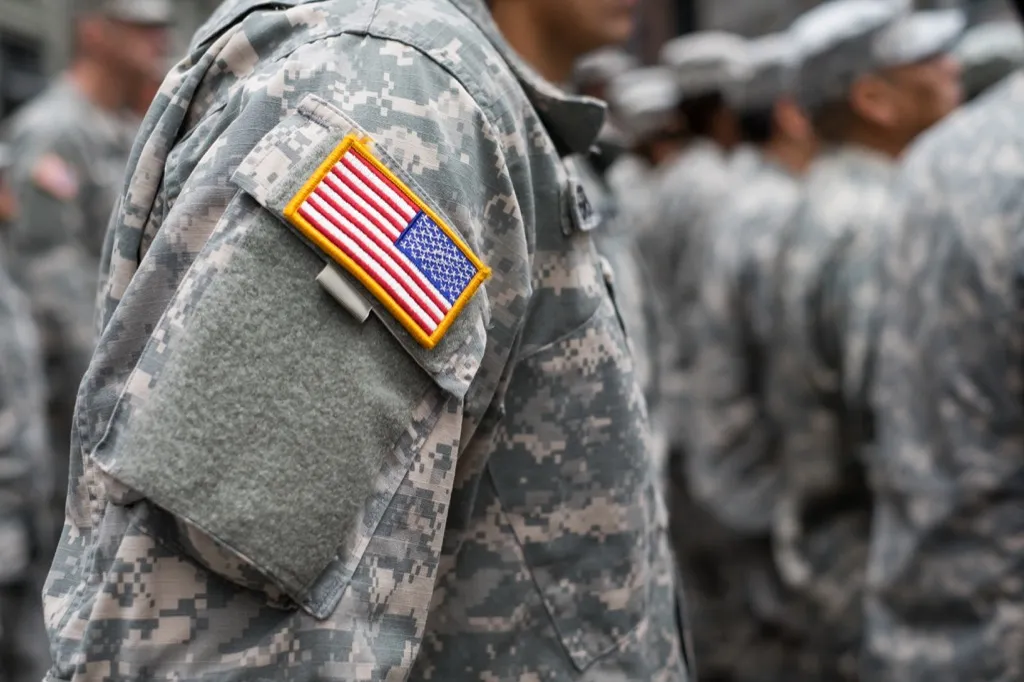
If you guessed that the United States is the top spender when it comes to shelling out money for its military, you’re absolutely correct. The Stockholm International Peace Research Institute reported that the United States spent $649 billion on military spending in 2018, with China trailing behind at $250 billion. The other three countries making up a collective 60 percent of global military spending were Saudi Arabia ($67.6 billion), India ($66.5 billion), and France ($63.8 billion).
28
Less than 10 percent of the U.S. population tuned in to watch the royal wedding in 2018.

According to Nielsen, an estimated 29.2 U.S. million viewers were among the television audience for the royal wedding of Prince Harry of Wales and Meghan Markle. But, taking into account population estimates for May 19, 2018, using the Census Bureau’s population clock, that only works out to a little less than 10 percent of the U.S. population at the time.
Still, there were nearly 30 million American viewers who dutifully rubbed the sleep from their eyes to watch the American actress marry her Prince Charming in real-time. (Coverage started at 4:00 a.m. EST.) Aww.
29
Drake was streamed more than 8 billion times in 2018 alone.

In addition to being Spotify’s most-streamed artist for 2015, 2016, and 2018, Drake became the streaming platform’s most streamed artist of all time, with 8.2 billion streams in 2018. (Ed Sheeran took the coveted title of most-streamed artist for 2017.)
30
Americans are eating 4.2 billion avocados annually.
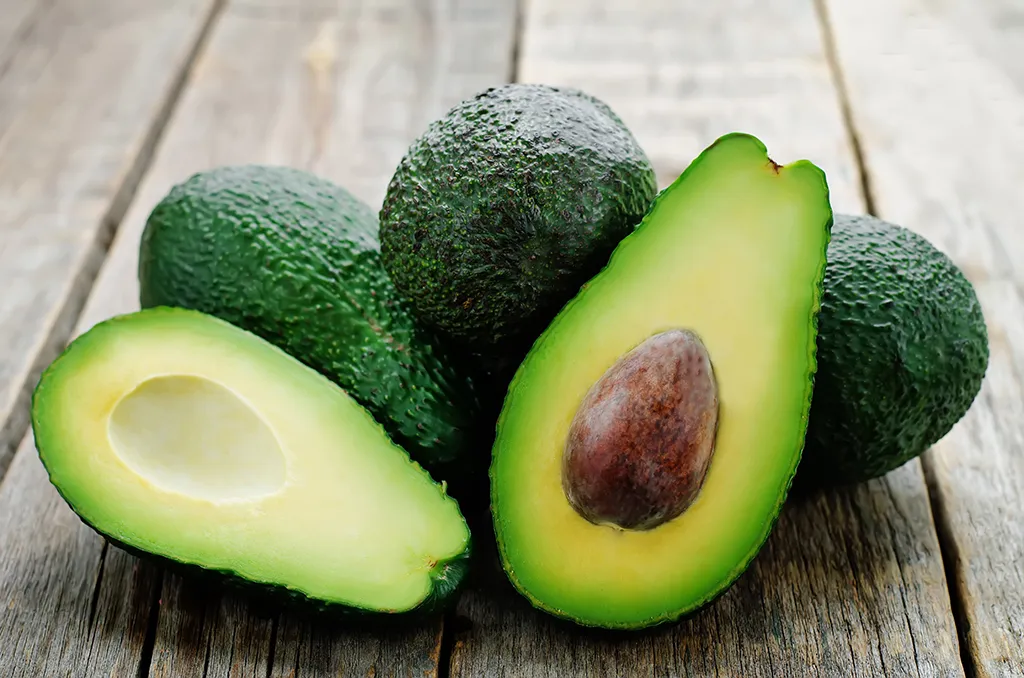
According to a report in the Washington Post, citing figures from the Hass Avocado Board (that’s the type of avocado you’re most likely to eat stateside), Americans consumed a jaw-dropping 4.25 billion avocados last year. No wonder no one under the age of 35 can buy a house!
31
More than 15 million Americans still lack mobile LTE broadband at the median speed.

Ever been frustrated when your call unexpectedly fails? Imagine being one of the approximately 14 million rural Americans and 1.2 million Americans living on tribal lands who still lack mobile LTE broadband at the median speed, according to a 2018 report from the FCC. (For the super tech-savvy, the FCC defined the current median mobile wireless speed standard to be 10 Mbps downloads/3 Mbps uploads.)
32
A high school graduate will have taken around 100 mandatory standardized tests since pre-kindergarten.

The Council of the Great City Schools published a report in 2015 revealing that the average high school graduate in an American “big-city public school” will have taken approximately 112 mandatory standardized tests since pre-K—and that doesn’t even allot for the number of times a student will take practice tests to gear up for the real deal. All told, the report estimated that standardized testing eats up between 20-25 hours each school year.
33
Ride-sharing services have contributed to an increase in traffic deaths by nearly 3 percent.

You would think that the convenience of being able to order your own personal ride through just a couple taps on an app would cause the rates of traffic safety deaths to plummet. But, according to a 2018 study conducted at the University of Chicago, ride-sharing services like Uber and Lyft have actually contributed to an increase in traffic deaths by 2 percent or 3 percent since 2011—totaling about 1,100 deaths a year. The report attributes part of the increase in traffic deaths to the congestion caused by the practice of “deadheading,” or ride-share drivers maneuvering through the streets in search of their passengers.
34
There are nearly 12,000 annual injuries related to TVs falling in the U.S.
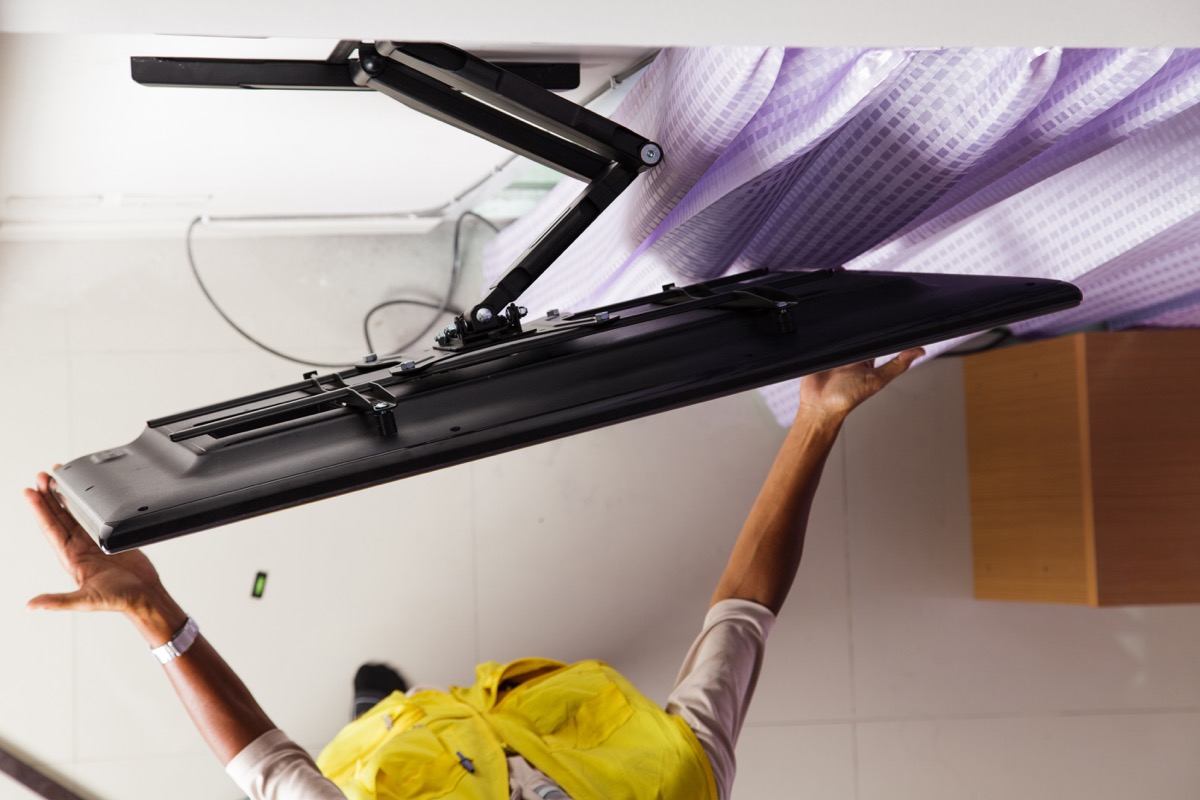
That new 4K flat-screen might be more dangerous than you think. The U.S. Consumer Product Safety Commission (CPSC) estimates that falling TVs cause 11,800 injuries to Americans every year—and those are only the injuries that actually require treatment from an emergency department. In fact, these injuries are so prevalent that the CPSC has an entire section of its website devoted to reports on “tip-overs” of furniture and décor.
35
Only 3 percent of adults over 65 use Snapchat.

A 2019 survey by the Pew Research Center found that 24 percent of American men and 24 percent of American women report using the social media platform infamous for its disappearing photos (and, uh, all the nefariousness that comes with that). What’s more, the survey found that 3 percent of adults aged 65 years and older say they have used Snapchat! Frankly, that’s pretty impressive.
36
The number of online video service subscriptions has surpassed cable subscriptions, by an impressive 57 million.
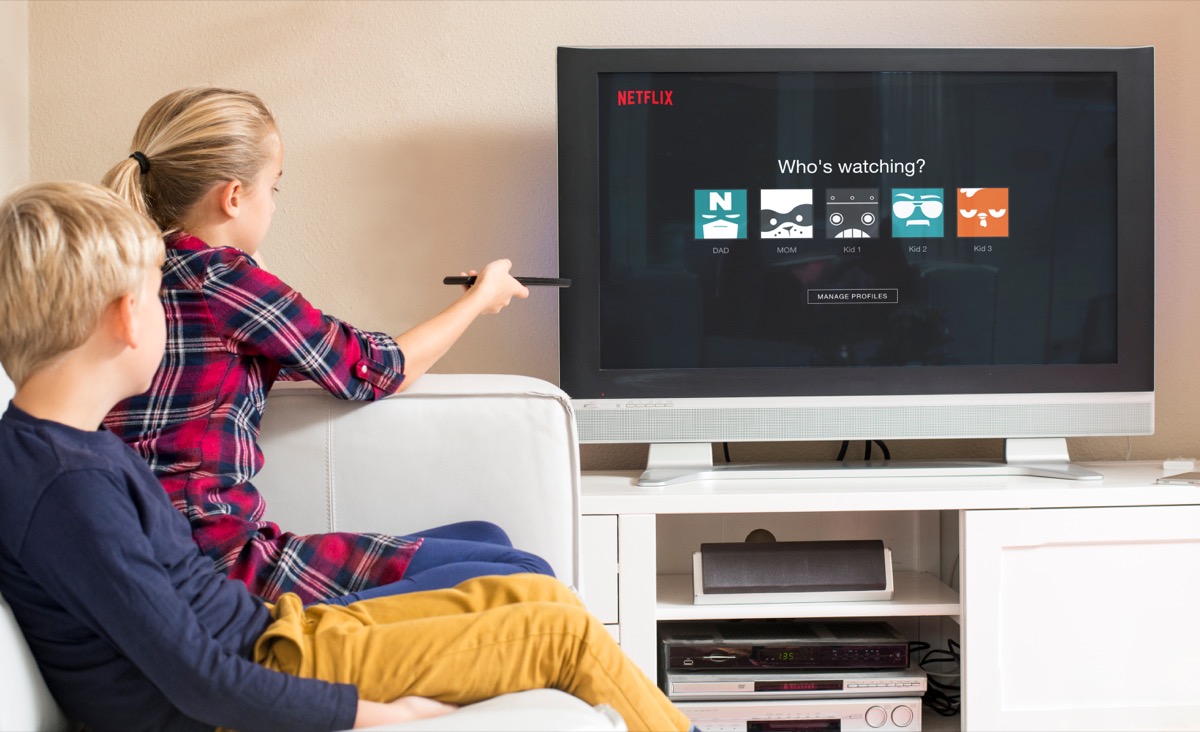
Companies like Netflix, Hulu, and Amazon Prime are making their mark. Global subscriptions to online video services reached an unprecedented height of 613.3 million in 2018, pulling ahead of the number of cable subscriptions (556 million) by a landslide—57 million—according to the 2018 report from the MPAA.
37
Disney theme parks account for more than half of the total major theme park attendance in the U.S.

There’s some pretty powerful pixie at Disney theme parks, bringing tons of visitors in year after year. According to the Themed Entertainment Association’s Global Attractions Attendance Report, the crowds keep flocking in to see the magic for themselves—giving Disney the satisfaction of claiming 55 percent of attendance at the top 20 amusement parks in North America. (Disney has six parks in the top 20: Magic Kingdom, Disneyland, Animal Kingdom, Epcot, Disney’s Hollywood Studios, and Disney California Adventure.)
38
More than a half-billion Instagram accounts are active every day.
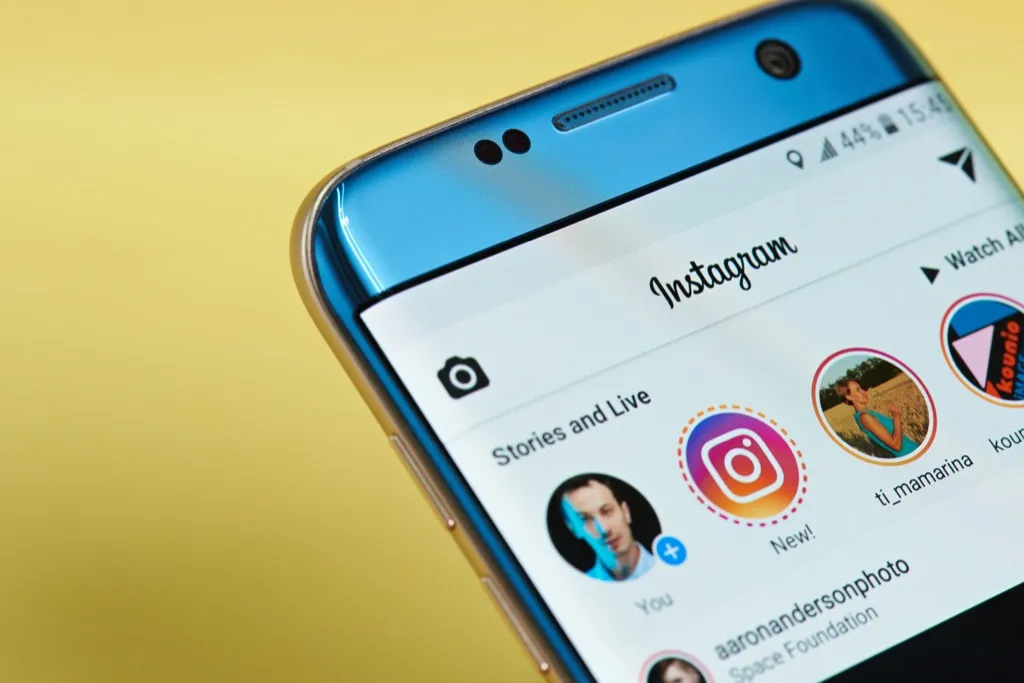
According to Instagram internal data from September 2017, the picture-sharing platform is home to an incredible 500 million+ daily active accounts. Even if those accounts aren’t posting on a daily basis, they’re definitely scrolling. The platform even estimates that there are more than 1 billion accounts that have some activity every single month.
39
Each American drinks an average of 26.5 gallons of beer and cider per year.

Business certainly is hopping for the beer industry. The average American (21 years and older, of course) drank an impressive 26.5 gallons’ worth of cold ones in 2018, as reported by the National Beer Wholesalers Association.
40
One in 10 American jobs are supported by traveler spending.
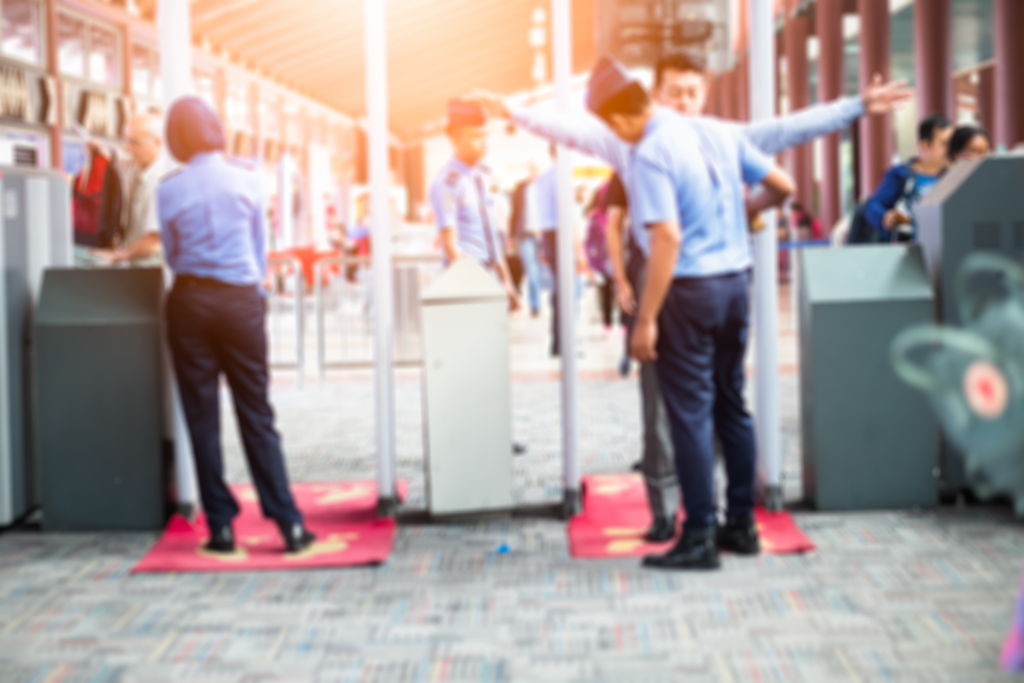
According to the U.S. Travel Association, travel expenditures in 2018 supported 15.7 million (or one in 10) American jobs. Maybe that will help you keep your temper in check the next time you’re in a tizzy over the airport’s exorbitant bottled water prices!
41
Americans spend more than $72 billion on their pets annually.

With the rising prevalence of dog spas and premium pet chow, it’s no secret that Americans firmly believe in pampering our pets. The American Pet Products Association confirmed that the dollar-value of all that tender love and care can really add up, reporting that Americans spent $72.56 billion in 2018 on making sure Fido has everything his heart desires (and medically requires).
42
Only 9 percent of Americans say baseball is their favorite sport to watch.

Baseball might be “America’s pastime,” but, according to data from a 2018 Gallup poll, baseball was only 9 percent of Americans’ favorite sport to watch. Ultimately, football continued its winning streak (which it has maintained since 1972) as 37 percent of Americans’ favorite sport to watch.
43
One in five American high schoolers are smoking e-cigarettes.

Unfortunately, as with all things electronic, it seems that kids are much more likely to hop on the e-cigarette bandwagon than their parents are. The CDC reported that, in 2017, only 2.8 percent of American adults were e-cigarette users, while, in 2018, 20.8 percent of high school students and 4.9 percent of middle school students smoked e-cigarettes.
44
The largest horn spread ever on a steer is wider than the Statue of Liberty’s face.

Even Lady Liberty herself (whose “head thickness from ear to ear” measures exactly 10 feet) might think twice before going up against Poncho Via, a 7-year-old Texas longhorn hailing from a farm in Alabama. The steer has horns that stretch 10 feet and 7.4 inches—making his horn span twice the width of a concert grand piano, according to Guinness World Records.
45
More than 1 billion people worldwide have some kind of vision impairment.

The World Health Organization estimates that approximately 1.3 billion people in the world have a vision impairment. Maybe this stat actually isn’t that surprising, once you start to count up the number of people you know who wear glasses or contacts. It’s no wonder that startups like Warby Parker are seeing such wild success!
46
Americans take 1.8 billion trips for leisure annually.

Americans may work hard, but we believe in playing hard, too—that’s evident from the fact that we took 1.8 billion trips for leisure in 2018 alone, according to the U.S. Travel Association. In order to fit the bill of a “leisure trip,” the traveler needed to either spend the night away from home (in “paid accommodations”) or take a trip at least 50 miles from home.
47
Only 2 percent of shoes sold in the United States are actually made in America.

Data analysis conducted by the American Apparel & Footwear Association found that 97 percent of clothes and 98 percent of shoes sold in the United States are imported, as of 2017.
48
The average American spends just under $1,000 on clothes each year.

According to research by the American Apparel & Footwear Association, the average American spends $971.87 on clothes annually. How many weeks of groceries is that for you?
49
Website visits for the top 50 U.S. daily newspapers last an average of two-and-a-half minutes.

The good news (yes, pun definitely intended) is that the two-and-a-half-minute average stayed roughly consistent from 2016 to 2017, according to data presented by the Pew Research Center. But to put that time frame in perspective, that means Americans are spending just a teensy bit longer on those news websites than the recommended time you’re supposed to spend brushing your teeth. Wild!
50
The odds of an average person dying from contact with hornets, wasps, or bees is one in 63,225.
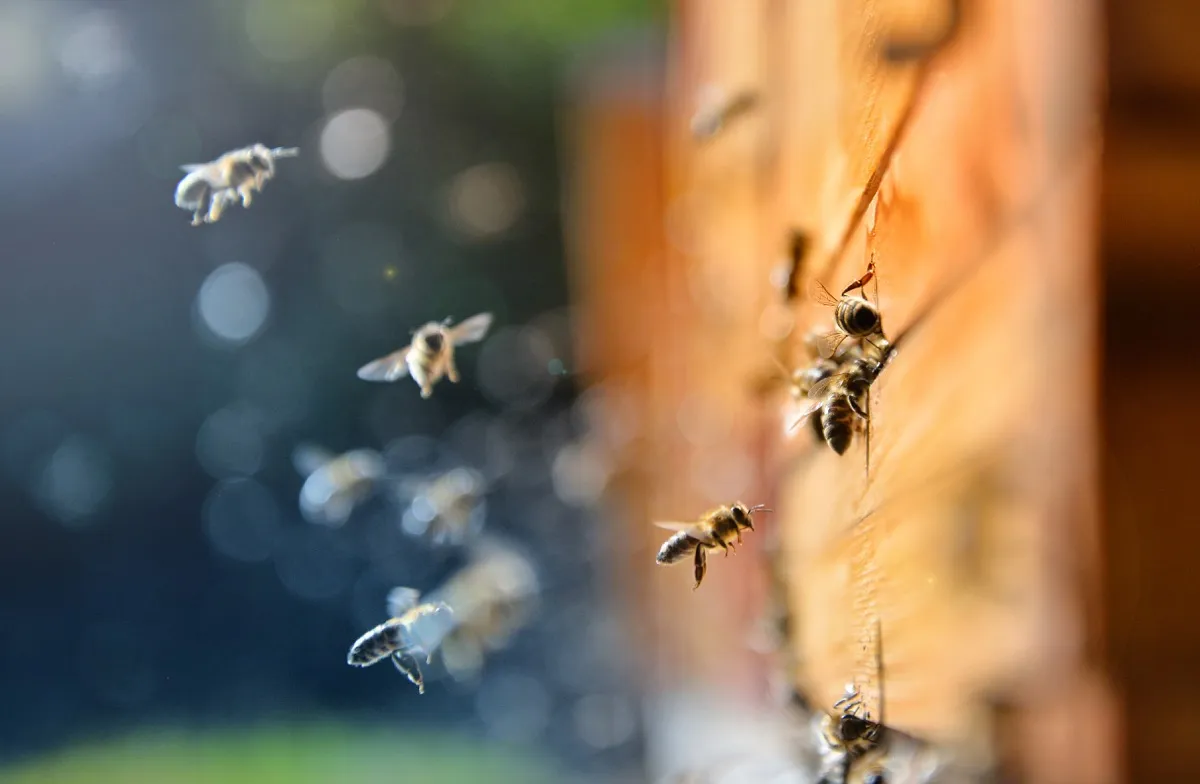
Now, that doesn’t mean a single sting from one of those suckers won’t still pack a punch, though. If it’s any consolation, the National Safety Council estimates that the likelihood of dying from a sting (one in 63,225) is much lower than the one in seven odds of dying from heart disease and cancer. And for more trivia that will blow your mind, check out these 100 Facts So Crazy You Won’t Believe They’re Actually True!
To discover more amazing secrets about living your best life, click here to follow us on Instagram!